Our Travel blog
|
Tuesday 27 – Wednesday 28 September We returned to Cambridge to finish packing up the flat that Alison’s son has been living in. We are currently going through the sale process to enable us to buy our house in Leek and so we had two days of furniture removal, cleaning, sawing a sofa into three and various little errands like taking the remains of the sofa to the dump. And may we say how courteous, helpful and friendly the staff at the Milton Recycling Centre were. It’s important to mention that because their website has some negative feedback, some of which I’d hazard a guess is unwarranted. For example one chap complained that they objected to him dumping his waste outside the gates because the centre was closed. I sometimes think it’s a shame that public sites don’t respond to some of the outrageous comments, but I suppose that would just encourage the moaners. Thursday 29 September We woke up to the realisation that we really don’t have any plans until next week when we are due to house sit for family. We settled on Lincoln, being somewhere we both would like to visit and within a reasonable distance for a 3 night stay. The local sites were booked up so through some process I don’t rightly recall we found a site at Sutton-on-Sea. I’m writing this ahead of visiting the town and nearby Mablethorpe so we could be in for a treat…or not. The journey here though was through the wastelands of the Lincolnshire Fens. Last time we passed through they were golden with corn or green with, I don’t know, barley or strawberries or something. Anyway they were at least colourful. Now, after the harvest they are dull; a flat monotonous sea of brown punctuated by scrawny trees and uninviting settlements; the sort of places with suspiciously few surnames, where you’d spend lonely evenings looking up at the vast sky and worrying about why you’re beginning to feel attracted to your sister. We passed lots of brown signs imploring us to visit ‘Historic Market Towns’ and other nebulous lures. At least the bypasses saved us from the tedium of attractions like folk museums with their displays of knotted corn, badly dressed mannequins and obscure exhibitions, like a collection of bus tickets I once saw, ‘kindly donated by Mrs Vera Penthouse in memory of her late husband Burt’. I think we all suspect Vera murdered Burt because he was the sort of tedious tit who collected bus tickets. I’ve always thought that the A14 is one of the world’s most boring routes but the A16 gives it a good run for its money. Its only saving grace is the chance to see a spectacular traffic accident. The road is heaving with lorries ferrying the produce from the surrounding farms, which gives the locals an opportunity to play leap frog with them. We followed a horsebox for a while, doing a sedate 50 MPH and were over taken regularly, nearly always both of us together and mostly on bends. At one point a Smart Car whipped past and just managed to squeeze itself in front of the horsebox as 30 tonnes of articulated death thundered towards it. Presumably the ‘Smart’ in Smart Car referred to the inanimate cocoon of underpowered plastic and metal and not the sack of barely sentient damp meat behind the wheel. The biggest hazard we encountered was rounding bends and coming face to face with grimacing twonks piloting their family saloons around some poor wretch and swerving in just in time. The last part of their manoeuvre was usually accompanied by our flashing headlights and language of indescribably poetic beauty from Alison that I’d helpfully translate into a rather severe version of sign language for the hard of thinking. Beyond Spalding, whose main attraction appeared to be the Springfields Shopping Village that also caters for weddings, the landscape became more interesting, although the bar wasn’t set very high. We drove passed lightly rippled fields looking like they’d heard about hills but didn’t really understand the concept of height, over the River Welland and into countryside of brassica rich greenery. It’s a sign of how boring the rest of the journey was when a field of cabbages becomes interesting. From time to time the 272ft high ornate pale spire of Boston Church, known locally as Boston Stump, would peep out from the trees until we skirted by it as we wove round roads busy with school traffic, passed the still turning Maud Foster Windmill, and out the other side of Boston. Boston itself has much history, not least the Pilgrim Fathers, but we didn’t stop, preferring to head on and into the Lincolnshire Wolds, an area of Outstanding Natural Beauty we were completely unfamiliar with but from what we saw is worth a proper exploration; rolling farmland with proper hills and views that don’t involve flat horizons or cabbages. The road was shaded by trees and even the traffic seemed more serene, happy to trundle along. We rolled up at the Sutton site in time to sit out in the sunshine and watched it sink behind the trees. It’s good to be back on the road, settling into our routines, cooking familiar staples in Mavis and generally pottering about. We’ve planned some walks to help us explore the area and have some paperwork to catch up on for our jobs and house purchase. It’s an odd feeling, a mixture of anticipation for what the future holds, sadness that our carefree days in Mavis are drawing to a close for this year and excitement at settling in a new town and making Livingstone Street our home. Meanwhile while we are here Alison has to learn some new profanities in time for the return journey as she’s used up all the ones she knows, and let the record show it was an impressive collection. I have a few for her to try but we welcome your contributions so feel free to suggest your favourites in the comments section, we promise to use them all at least once :) Friday 30 September We decided to get some exercise and walk from Sandilands, just south of Sutton-on-Sea, to Mablethorpe, a walk of around 3.5 miles each way along one continuous promenade. Sandilands, in common with most of the coastal communities around here, seems to be composed mainly of bungalows. Perhaps if you’ve been born and raised in Lincolnshire life over one story high brings on altitude sickness. We wandered through streets of modern brick bungalows with ugly faux leaded windows and prim striped lawns and into a street lined with older 50’s style chalets, a patchwork of the well-kept and the ramshackle. At the edge of town we climbed onto the sea wall promenade to an expanse of featureless sand gently lapped by a grey sea. If the landscape of Lincolnshire is flat and featureless then the seascape matches it perfectly, mile upon mile of sand and sea with occasional scrubby sea grasses poking out from windswept dunes. Apparently at very low tides the remains of an ancient forest can be seen in the sands, but not today. Lining the land side of the prom was an almost unbroken line of beach huts. These were mostly boarded up for the winter, bleak and unloved in the autumn sunshine. Some had names, 40 Winks was quaint, and being as it was between huts 39 and 41 it made sense. Others though just showed the owners lack of imagination or sense of humour; Sea Breeze, Dun-Workin’ or Shiver-me-Timbers. That last one made me want to scream…”You’re not a fucking pirate, you’re a retired accountant from Louth. The closest you’ve come to skulduggery is once short changing the coffee fund by 5p because you didn’t have any change.” And on we trudged all the way to Mablethorpe. At the beach café a party of pensioners in several polyester rich layers were taking tea and moaning about the wind, which wasn’t too encouraging but the formal park with its pedalo swans tied up in the middle of the lake and flock of geese guarding the west bank was more promising. The walk to inland however revealed a drab façade of a town centre, a high street of fast food and poverty. Apart from a bright Co-Op every shop was closed or clinging on, selling cheap holiday clothes unlikely to survive a single wash, a couple of ‘indoor markets’ selling shoddy rip off designer wear, food past its sell by date and unsightly ornaments. The people looked hard and bitter, grim faced and in no particular hurry, except for the preponderance of mobility scooters weaving in and out of the pedestrians. Mablethorpe may come alive in the summer but it was wretched out of season and the neglect didn’t set in the minute the last charabanc left after the summer holidays. This is serious, endemic despair, generations deep and it’s hard to see it turning around any time soon. If it has a saving grace it is at least cheap, under £2.50 for a pint of Doom Bar beer and £6.50 for a generous Haddock and chips. But I formed the impression that any more would be prohibitive for the locals. I’d like to be more generous and see the up side. For all its brash and bawdy atmosphere, when we visited Hemsby it at least had spirit and was trying to re-invent itself as a traditional resort. Mablethorpe really needs a purpose, a reason to bring visitors in and a few local community champions to restore some pride and boost the economy. It was once much loved. Alfred, Lord Tennyson visited regularly and D.H. Lawrence set the Morel family's first holiday here in his 1913 novel Sons and Lovers. It was busy during WW2, with the Lincolnshire airfields close by and the miles of sand considered inviting for a German invasion. It was bombed a few times, possibly on purpose but probably mistakenly for Grimsby. In November 1941 a German Junkers 88A-4 was hit by anti-aircraft fire and managed to land pretty much intact on Golf Road, Mablethorpe. The coast along here also suffered in the North Sea flood of 1953. Flooding occurred from Mablethorpe to Skegness, reaching up to 2 miles inland. Local rumour has it that the repairs to the sea wall, hurriedly conducted by the RAF, contain defunct WW2 vehicles and other surplus hardware that would be worth a fortune to collectors and enthusiasts today. After our lunch we walked back through the outskirts of the town, through endless incongruent bungalows. There were examples of unbearable twee-ness, little wooden wishing wells, neat shingle, concrete signs with ‘Nanna’s Garden’ on, others with a nautical theme featuring ropes and lifebuoys; others were overrun, neglected, with just a sad overgrown path leading to a peeling front door. This is a suburb of contrasts, wise investors and those who’ve scrimped and saved among those with dwindling state pension’s eeked out from one week to another on cheap food and a drink in the legion on a Friday night if it stretches that far. It’s a place where The Union Jack flutters in the constant breeze, where Brexit won with an overwhelming majority (nearby Boston recorded the highest pro-Brexit vote in the country). A place where every face we saw was white and every accent British. Yet as much as many people may like to lay the blame for the town’s decline on immigration, the town is, frankly, dying on its fat white arse, unlike more diverse and vibrant communities elsewhere. I don’t know the answers, I’m not even sure I know what the questions are, but it’ll take more than a little love and attention to turn Mablethorpe around. Strangely if I saw a beacon of hope it’s the previously mentioned Co-Op. They’ve taken the decision to build a shiny large store in a depressed town. Maybe people will travel in to it rather than away to the bigger towns. Maybe young people can get jobs, other shops will follow its lead, smarten up and people will invest in the place. I hope so. Back onto the promenade and to Sutton. There’s a cute well-kept ornamental fountain and paddling pool between the town and sea and clearly the civic authorities of Sutton regard themselves as a cut above their neighbours. In a thinly veiled reference to Mablethorpe the town’s website makes it clear it’s a resort free of amusement arcades. The sea seems to be Sutton’s biggest foe and the reason it hides behind a high sea wall. According to the towns website “Early accounts tell us of floods which washed away parts of the village in 1248, 1250 and 1251. Also in 1253 the sea flowed as far as Alvingham. 1571 saw great disaster for the village when, on October 5th, the high tide accompanied by a fierce wind and rain, took the church and a great part of the village. On the night of January 31st, 1953, came a grim reminder of what it must have been like in 1571 when the sea overran Old Sutton” Oddly although it mentions fatalities it doesn’t say how many lost their lives in 1953, but the toil was high right along the east coast of Britain as well as in Belgium and the Netherlands, which was hit particularly hard, losing over 1,830 souls. In all, over 307 lives were lost on mainland Britain and a further 224 at sea. The physical scars heal but the emotional legacy lives on and in places like Felixstowe, Canvey Island and around this part of Lincolns hire the spectre of the storm and the ruthless power of the sea is never taken for granted. We examined the High Street, one general store displayed their opening times as 9-00 - 4 ish which was refreshingly honest. Apart from that the only thing of note was the preponderance of large hardware stores, three in a town with few other amenities or shops. Presumably they are fond of a spot of DIY around here. We got back to Mavis in time to complete some outstanding paperwork for our jobs and reflect on Mablethorpe and hope that we’re wrong about it and caught it on a bad day. Here often when a child I lay reclined:
I took delight in this fair strand & free: Here stood the infant Ilion of my mind, And here the Grecian ships did seem to be And here again I come & only find The drain-cut levels of the marshy lea, Gray sandbanks & pale sunsets, dreary wind, Dim shores, dense rains & heavy-clouded sea Mablethorpe Alfred Lord Tennyson – 1837
0 Comments
Leave a Reply. |
IntroductionThank you for stopping by and reading our blog. If you don’t know who we are, what we are doing and you're wondering what this is all about you can read up on our project here. Archives
November 2017
Categories |

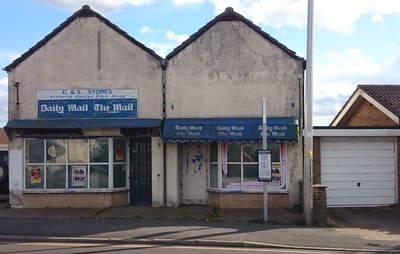
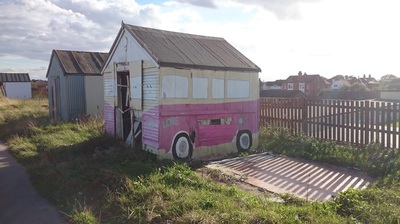
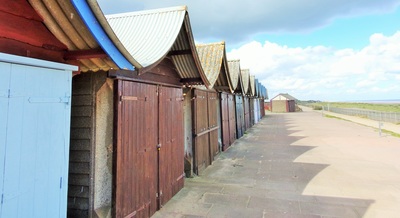
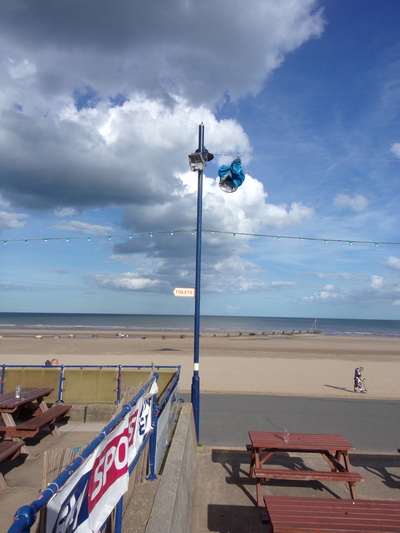
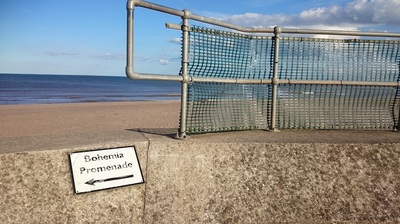

 RSS Feed
RSS Feed
